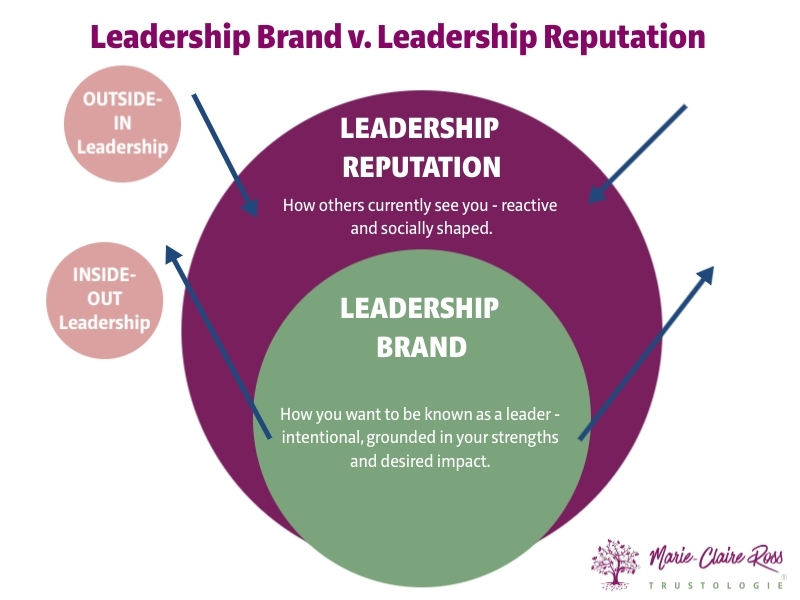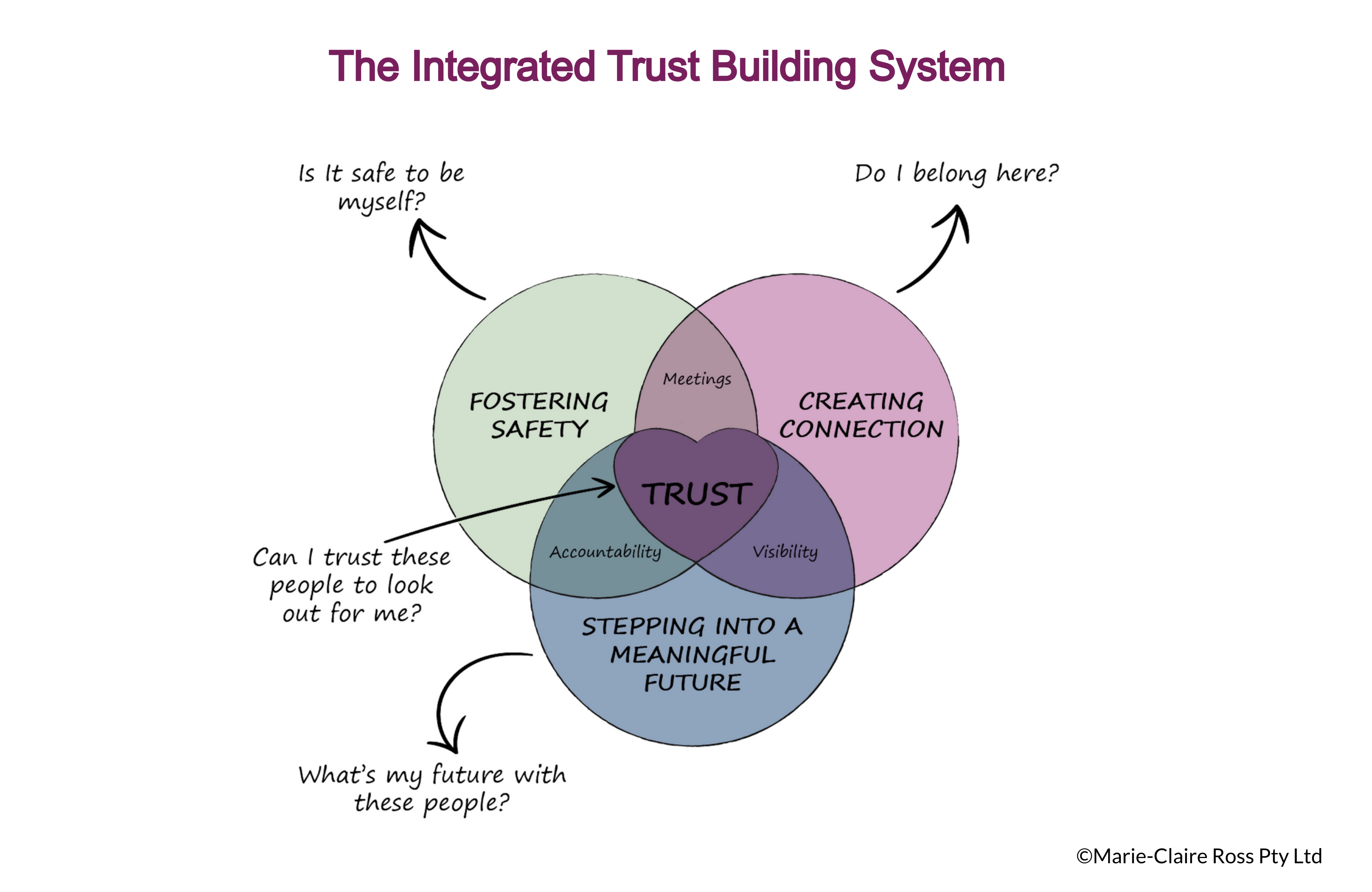6 Essential Executive Skills That Will Make You Unstoppable in 2026
The workplace is evolving at a pace few previous generations have seen and 2026 will mark a turning point. The Future of Work is blended, not hybrid....
Develop leaders, strengthen executive teams and gain deep insights with assessments designed to accelerate trust and performance.

Transform how your leaders think and perform with keynotes that spark connection, trust and high-performance cultures.

Explore practical tools, thought-leadership and resources to help you build trusted, high-performing teams.

Trustologie® is a leadership development consultancy founded by Marie-Claire Ross, specialising in helping executives and managers build high-trust, high-performing teams.

5 min read
Marie-Claire Ross : September 6, 2022

Consider an organisation that has had some sort of major public relations disaster such as bullying or sexual harassment allegations, CEO or executive misbehaviours, regulatory breaches or even, fraud. For years, toxic behaviours have been tolerated, even rewarded. Exclusion, unethical decisions, disrespect and selfish actions have flourished. People behaving in these ways were almost never fired. Even worse, they were often promoted.
The fallout is costly - high turnover, brand damage, legal costs and employees who are shell-shocked from all the trauma.
Turning around the culture from one that is toxic to tremendous takes time. In most cases, it often involves a new CEO with fresh eyes willing to do the hard work of removing toxic people and behaviours. A CEO you could say, who does the job of the liver.
In our bodies, our livers are constantly filtering out toxins, so we can live a healthy, happy life. It's a transformative organ.
This is what turnaround CEOs do - they transform the toxic negativity of the past, filtering out interactions, communications, ideas and actions that are no longer acceptable for the organisation to continue. They work on replacing the old with new ideas, behaviours and communication - a new culture where everyone thrives. Not just a select few.
I've interviewed many CEOs on what they have done to turnaround companies and I often get to work with their leadership team. I want to share with you the six steps these companies have taken to regenerate their workplace culture:
1. Step back and take a bird's eye view - The tried and true approach for this is a CEO who goes on a listening tour involving a lot of consultation and consideration before they begin to make any changes. Stephane Bancel (the current CEO of Moderna) became the CEO of Biomerieux (a French biotechnology company) with 6000 staff when he was young. He didn’t know what to do. In his first, two months on the job he travelled the world and talked to 150 leaders in 40 countries. He asked:
The approach might seem slow. Yet, what's interesting is that culture is revealed in the stories people tell. This process starts the slow process of rebuilding trust throughout the organisation. No-one will trust a CEO who comes in and starts tearing everything down without any consultation. Additionally, the insights it provides help CEOs work out the organisational strategy and how to begin reforming the workplace culture.
2. Remove toxic leaders and employees - After speaking to lots of people throughout their organisation, CEOs have a pretty good feel for which people are part of the problem and need to leave. This means that some executive team members will no longer be welcome who are not thought to be capable of executing on the new strategy or behaving well. A lot of employees often welcome this approach. Seeing leaders being removed sends a strong signal as to what behaviours are acceptable providing not only a sense of relief, but safety.
CEOs will also tend to leave a couple of executives in the team they are unsure about and will coach them regularly to help them meet the new levels of performance and behaviours. Providing them with the opportunity to lift their standards and to resign gracefully if they don't feel they can improve.
3. Continue with an internal focus - Where a lot of cultural change programs go wrong is that they focus on the symptoms, not the system. You'll find a lot of companies will work on ethics training or even trust training which are all bandaid approaches that do little to improve the systems or rewards that feed the toxic behaviours.
Cultural change is really a systemic intervention that requires an inside out approach. There are six levels of cultural change. It requires starting inward and focusing on the core - the mission and values. Then, it needs to gradually move out to the cultural identity, beliefs, capabilities, behaviours and the environment itself.
Overhauling the mission and values requires a consultative approach with employees, customers and other stakeholders. A cultural audit is ideal that discusses the current cultural norms and then asks participants what norms are now required based on the new strategy. An audit helps identify the gaps and determines what behaviours are needed moving forward. This then helps the CEO and senior executives figure out behaviours that can be used to filter new hires and feed into the leadership development program, employee rewards and capability programs.
4. Leadership team role modelling -The executive team are cultural role models with employees closely observing their interactions for cues on acceptable behaviour. How the leadership team behaves and communicates is manifested and amplified throughout the firm - for better or worse. Employees check for signs of alignment in the leadership team based on whether executives know what their peers are working on, if they consider and include them in decisions and promote the same messages.
Poor follow through or collaboration in the leadership team gives licence for other teams to work individualistically. Silos form that make it difficult for collaboration, innovation and customer satisfaction. It also makes it hard for HR to improve mid-level leadership skills when poor leadership team behaviours undermine training efforts.
Interestingly, a lot of executive teams aren't aware that they aren't collaborating. It's important to start undertaking regular work as a team to improve collaboration and behaviours, in order to increase trust throughout the organisation. Employees tend to not trust the decisions made in a leadership team, if they can see that they are not aligned. A framework like SUCCEED Together can be helpful, as well as regular executive team workshops as the cultural change program gets underway.
5. Distil the cultural message to one thing - Communicating the cultural change is best done with a clear focus on one thing. Satya Nadella, the CEO of Microsoft has famously turned around the rigid, inflexible culture at Microsoft, since he became CEO in 2015. He did this by focusing everyone on a growth mindset. The simpler the message, the easier it is for people to get behind what needs to be done and be excited about the change. This requires the CEO with the executive team to work on changing beliefs and identity about what it means to work at the company.
This is really about the brand image and what employees say about the organisation and how they refer to themselves. Story-telling is critical for cultural change. It starts with the CEO starts telling new stories of what it is like to work at the company and what behaviours are valued.
A well thought communication and PR strategy needs to ensure that this is consistent both internally and externally. This must also include communication that understands how employees are feeling and validates their experience.
6. Align the outer beliefs - Once it is clear on what the new inner core of the organisation needs to look like, then it's time to rollout training that improves capabilities and behaviours, update how people are rewarded and then improve the working environment. This takes time and requires help from lots of departments from HR, risk, safety, communication, L&D, finance and so on that typically all work with the change department to embed the new ways of working and thinking.
It also means overviewing all of the enabling mechanisms so that people have the right resources, training and support to embrace the new transformation.
The reality is I have seen countless toxic leaders, create a culture of fear that lasts for years. It's almost as if the fear and chaos they have created has been embedded into the company DNA. Employees need to be able to talk about what happened. Otherwise, it gets all bottled up and creates resistance to change. What's interesting now is that employees are waking up to these toxic workplaces and refusing to put up with it.
According to a recent Sloan Management review study, the great resignation is being driven by employees leaving a toxic culture. A toxic corporate culture is 10.4 times more powerful than compensation in predicting a company’s attrition rate compared with its industry.
We all know that the world has changed. Things that were accepted in the past are no longer being tolerated. Transforming from toxic to tremendous requires replacing the old behaviours, ideas and process with new ones. While it can be long, painful and hard the turnaround can be absolutely amazing, if the focus is on rebuilding trust and treating people like human beings.

The workplace is evolving at a pace few previous generations have seen and 2026 will mark a turning point. The Future of Work is blended, not hybrid....

Many leaders jump into a leadership position excited by the opportunity to help others and perform at a higher level.

What makes a good team leader isn’t just about having authority or getting tasks done - it’s about the ability to create an environment where people...

Trust might be a small word, but it is a big, complicated topic.

As someone who speaks at leadership conferences to help leaders understand how to identify and maintain trust, I often get requested about what team...

Trust in business is foundational. It underlies every human relationship, every interaction, every communication, every initiative, every work...